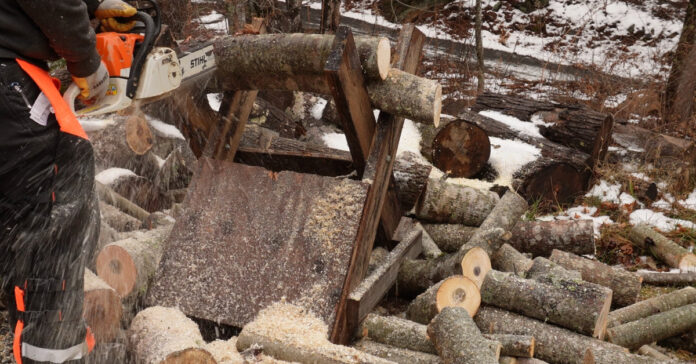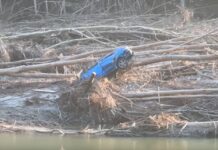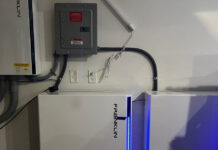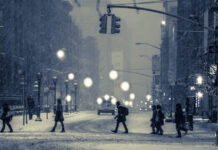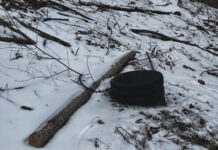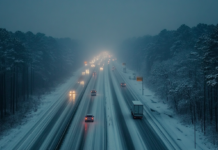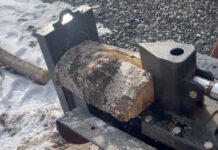I know I have written about winter weather a few times these past two weeks, but regardless of what is going on in Washington, Tel Aviv, or Moscow, what happens in your local area has a greater impact on your day-to-day life. One of the lessons I learned after living through Helene is you need to prep for local and regional weather and geological phenomenon just as much as global catastrophes.
It snowed twice so far this year, but with only four inches on the worst day, we didn’t have what I would call a blizzard. While we had plenty of wind, I didn’t see any whiteouts. We did experienced a 13-hour power outage, but from our perspective, it was just another winter snow day.
There have been winters in which we get storms weekly, so as more snow is expected this weekend, perhaps this year just represents a return to the norm.
Because of the snowy road conditions, we haven’t left the mountain since the 31st, but we plan to slip into town Wednesday or Thursday to run some errands before the next storm hits. In the meantime, I am enjoying the solitude. That’s one reason I moved out here.
We are Burning Through Firewood
The day before the snow hit—or should I say, hit again, since the prior snow had not yet fully melted—I brought in two wheelbarrow loads of firewood and stacked it by the stove. Then I reloaded the wheelbarrow and parked it in the garage. When the indoor pile got low, I replenished it from the wheelbarrow, thus being assured of dry wood. These are not small logs. They are thick, robust chunks of hardwood, the kind that will crank out the BTUs for hours.
Before the next storm hits, I’ll restock. It’s good exercise, and I need all I can get.
Speaking of exercise and firewood, I cut up more wood from our fallen trees. Using a chain saw is one of the more physically demanding jobs I do on the homestead. In just 45 minutes or an hour, I end up drenched in sweat, even when I take my coat off ahead of time.
Burn Pile
There is only so much outdoor work I can do in the snow, but I took advantage of it and burned some of our post-Helene woody debris, which is mostly branches, brambles, roots, and vines from the downed trees. Getting it lit in the snow was a challenge, but I used two cardboard boxes with dry kindling in them and it slowly went from flickering to roaring. Adding new branches to the burning pile required care because many of them had snow or ice on them and I didn’t want to put the fire out.
Our road is in such a sorry state that I knew no firetruck could make it up the mountain, but with snow on the ground, I was not worried about the fire spreading. There were no dried leaves to catch, and I burned a safe 200 feet away from the house. As I tended the fire, the wind picked up, and I was glad for the snow.
The Chickens Don’t Like the Snow
The chickens don’t like the snow. They stay in the chicken house as much as possible. I can’t blame them. I don’t have to walk around barefoot, but I also stay in my house as much as possible when we have heavy snow.
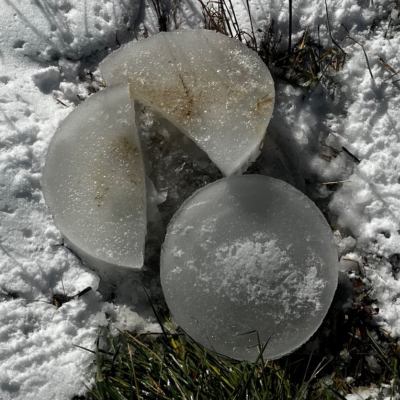
The last two days they have laid 10 and 11 eggs, down from 14 to 15. I consider this proof they don’t like the cold. Their water freezes so quickly when the temperature is in the teens I have to change their water twice a day.
I have seen the bees flying only once in the past three weeks. When the temperatures rise, they take what are called elimination flights. They fly in a circle outside the hive long enough to relieve their little bee bowels. The bees are too fastidious to poop inside the hive. I wish the chickens felt that way about their coop. I add fresh straw to their coop once or twice a week to combat the buildup of chicken poop. When the eggs get dirty, I know it’s time to add straw.
Ground Water
One benefit of snow is that it melts gradually, allowing plenty of time for the water to soak into the ground rather than run off. This helps build the water table, which is important to anyone who relies on a well or a spring as their water source. Of course, plenty of snow melt still runs down the mountain. Our streams are high and the large one is running over the ford again. Since the DOT rebuilt the ford, the water has been below the ford, over it, below it, and once again flowing over the ford.
We had some heavy rains a few weeks ago and while our stream and creeks managed fine, the water level in the valley was much higher than normal. Reports are the riverbed is as much as four feet higher than it was before the storm. Apparently, the river rock and gravel that washed out and was carried downstream settled in some locations, making future flooding more likely. The state is going to see if the Army Corps of Engineers will help dig out the creek and river beds or if FEMA will pay for it to be done by a private contractor. Problem is, doing so will probably attract lawsuits from the environmentalist who think we should let nature take its course.
I expect none of them live near a flood plain.
Baking Bread
Since we don’t leave the property during or after it snows, my wife filled her time with baking bread. She is trying to perfect her artisan bread recipe, so she has baked three loaves so far, one per day, tweaking the recipe each time. After the first loaf, she used more water in the recipe and had a stickier dough. In the third, she chilled the dough for eight hours, which is supposed to make the resulting bread taste better. It did. Refrigerating the dough overnight definitely resulted in a better tasting bread.
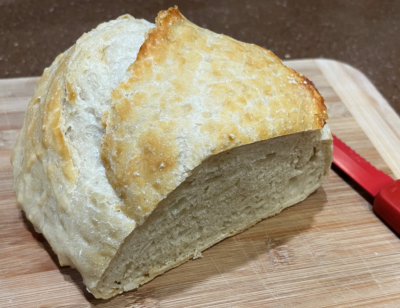
A future practice loaf will include whole wheat. We may even grind it from our supply of hard red wheat kernels.
She bakes the bread in a pre-heated Dutch oven inside our conventional oven. It comes out a bit more oval than round and has a crisp crust that is nice and crunchy without being too thick. The lack of a baking pan and the round loaf may be what makes it “artisan” bread.
I like that this bread could be baked by placing the Dutch oven in an open fire. To me, that makes it prepper bread. Once she comes up with a 100 percent whole wheat recipe, we’ll be set..
Solar Power Performance
We are experiencing our first winter with solar power. The morning after our first serious snowfall, the panels, which have a nameplate capacity of 8500 watts, were producing only about 300 watts. Because it was below freezing all day, not much snow melted off. We produced only 3.6 kilowatt hours (kWh) that day and 5.2 kWh the next. Then we had a suddenly sunny day and made almost 32 kWh.
After our 13-hour power outage—which took place overnight, a time when we use little electricity—our whole-house battery had dropped from 100 percent state-of-charge to 69 percent. Before the grid was restored, there was enough sun it had worked its way back up to 74 percent. Still, this would be a tough season to be off grid.
Although December has the shortest days of the year, I suspect January will have less sun.

